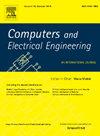A novel approach to low-light image and video enhancement using adaptive dual super-resolution generative adversarial networks and top-hat filtering
IF 4
3区 计算机科学
Q1 COMPUTER SCIENCE, HARDWARE & ARCHITECTURE
引用次数: 0
Abstract
Image and video enhancement under low-light conditions is challenging, as the task involves more than just brightness adjustment. Without addressing issues such as artifacts, distortions, and noise in dark regions, brightness improvement alone can worsen the quality. This paper presents a novel approach to low-light image and video enhancement based on the adaptive fusion of Dual Super-Resolution Generative Adversarial Network (DSRGAN) models, followed by Top-Hat Gradient-Domain Filtering (THGDF). A soft thresholding mechanism is used to integrate the Memory Residual Super-Resolution Generative Adversarial Network (MRSRGAN) and the Weighted Perception Super-Resolution Generative Adversarial Network (WPSRGAN). MRSRGAN enhances fine details, improving the objective performance of the image, while WPSRGAN improves overall details, enhancing the subjective performance. Top-hat gradient-domain filtering is then applied to remove artifacts, distortions, and noise in both images and videos, resulting in outstanding perception scores. The proposed approach is validated using the quality assessment metrics such as Peak Signal-to-Noise Ratio (PSNR), Structural Similarity Index Measurement (SSIM), and Information Fidelity Criterion (IFC). Extensive experiments conducted on publicly available source codes and databases demonstrate that the proposed method is more effective than the existing state-of-the-art techniques.
求助全文
约1分钟内获得全文
求助全文
来源期刊

Computers & Electrical Engineering
工程技术-工程:电子与电气
CiteScore
9.20
自引率
7.00%
发文量
661
审稿时长
47 days
期刊介绍:
The impact of computers has nowhere been more revolutionary than in electrical engineering. The design, analysis, and operation of electrical and electronic systems are now dominated by computers, a transformation that has been motivated by the natural ease of interface between computers and electrical systems, and the promise of spectacular improvements in speed and efficiency.
Published since 1973, Computers & Electrical Engineering provides rapid publication of topical research into the integration of computer technology and computational techniques with electrical and electronic systems. The journal publishes papers featuring novel implementations of computers and computational techniques in areas like signal and image processing, high-performance computing, parallel processing, and communications. Special attention will be paid to papers describing innovative architectures, algorithms, and software tools.
 求助内容:
求助内容: 应助结果提醒方式:
应助结果提醒方式:


